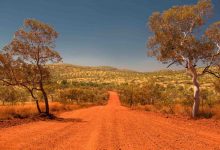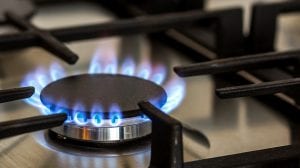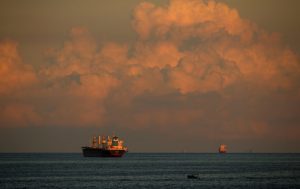Plans to establish Western Australia’s Pilbara region as major centre for renewable hydrogen production and export have received a major boost, after the $140 million of joint state and federal government funding promised for the project was locked in this week.
The Albanese and Cook governments said in a joint announcement on Monday that an investment of $70 million each would kick-start construction of roads and other supporting infrastructure this year, with the hub slated to become operational in mid-2028.
The hope is that the Pilbara Hydrogen Hub will also become an “international gateway” to Australian-made green steel and iron and will support around 1000 direct and indirect jobs, including for builders, concreters, electricians, plumbers, fitters and technicians.
“The world’s energy demand is changing, the world is demanding new types of energy,” climate and energy minister Chris Bowen told journalists at the unveiling in Karratha.
“The one thing we know is they still need energy, and we want this area to continue to provide that energy to the rest of the world as it has for generations.
“What this [announcement] is about is co-investing in the necessary infrastructure, the pipelines and port infrastructure, to see Karratha and to see the broader Pilbara become a renewable energy powerhouse for the world. This is about hydrogen.
“So this is a very important announcement. This won’t happen without this sort of government investment,” Bowen said.
The governments say a planned pipeline system could enable green hydrogen production of around 492,000 tonnes per year – enough to decarbonise existing ammonia production on the Burrup Peninsula. A CSIRO report suggested it could support up to 5GW of renewable energy capacity for the hub.
The hydrogen hub will be built on the traditional lands of the Ngarluma and Kariyarra people and includes Murujuga, where the traditional custodians are represented by the Murujuga Aboriginal Corporation.
As well as establishing the hub for hydrogen exports and renewable energy production, the funding will also support the establishment of a Clean Energy Training and Research Institute to provide practical, job-focused training for Pilbara residents, including First Nations peoples.
For federal Labor, the $70 million investment is part of its Regional Hydrogen Hubs program, which is investing over half a billion dollars to build hubs around Australia, including in Townsville, Queensland, and Bell Bay in Tasmania.
“This hub will bring a new clean energy industry to the Pilbara, supporting the region’s world-class industries well into the future,” said Bowen in an earlier statement.
“WA is already a global mining and export powerhouse, and it’s now primed to become a world-leading hydrogen supplier as well.”
WA premier Roger Cook says the project will establish renewable hydrogen production “on Asia’s doorstep,” helping to diversify the state’s economy.
Beyond the state and federal government-backed plans for the Pilbara, the region has had no shortage of interest from private developers with huge plans for their own massive renewable hydrogen hubs.
Among them, a consortium including Intercontinental Energy, Australia’s CWP Global, Pathway Investments and Vestas proposed the $50 billion Asian Renewable Energy Hub for roughly 220km east of Port Hedland, that was to include up to 26GW of wind and solar generation capacity.
These plans were rejected by the Coalition Morrison government back in 2021, however, after it was ruled the project would have “clearly unacceptable impacts” on matters protected by the Environmental Protection and Biodiversity Conservation Act.
Another huge Pilbara project was proposed in early 2022 by iron ore billionaire Andrew Forrest’s Fortescue Future Industries, including 3.33 GW of solar, 340 wind turbines, and a 9.1 gigawatt hour (GWh) battery.
By October of last year, however, the plans for Forrest’s Uaroo and Emu Creek cattle stations had been dialled back to vague plans to build 1 GW of solar, 1 GW of wind and 4 GW of battery storage in the Pilbara to help end Fortescue’s reliance on fossil fuels for transport and electricity.









